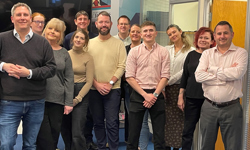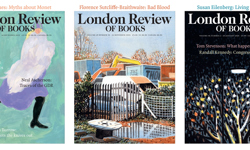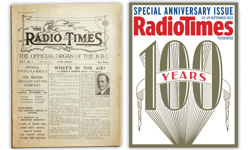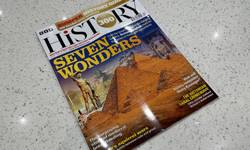
I met with Paul on a freezing cold February morning at a coffee shop in Blackheath. He had recently left Dennis where he’d been chief technology officer, to … err… spend more time with his family. Sorry to hear that, I say, but apparently it was his choice. He’d been there eight years, felt it was time for a change and with two young children (four years and four months), he wanted to spend six weeks or so with them, before diving back into the world of work, perhaps in publishing, perhaps not.
Little did I know, as I got out my pen and notepad, that I was about to conduct my longest ever interview – three hours and forty minutes! We could have gone on, had I not started to get cramp in my right hand. Paul is seriously knowledgeable, not just on IT ops but on publishing in general. I could write a book, but instead have to distil his words of wisdom down to 1600 words. Umm, what to leave out.
Tough love
In the course of eighteen years in the publishing business (Paul has also worked at IPC Media and the Manchester Evening News), he has managed large IT teams and budgets and seen at first-hand what can go wrong if you lose control of your IT function. What tips does he have?
I would characterise Paul’s approach as ‘tough love’, keeping tight control of the purse strings, maintaining an unerring focus on the job in hand and saying ‘no’ a lot. The person in charge of IT needs to wear two hats – a business one and an IT one, and the business one is the more important. Don’t give IT a free rein – they need to have clear budgets and targets. The business has to manage the IT department, not vice versa.
Beware the trap of over-specking IT projects; separate the different areas of functionality into the must-haves, nice-to-haves, and the nice-to-have-but-frankly-will-probably-never-needs and be brutal with the second and third categories.
Stay focused at all times. In IT, it is very easy to get diverted. If the project in hand is, say, the migration of a title from one platform to another, then do the migration, warts and all, and nothing else. Don’t fall into the trap of trying to do bug-fixes or functionality improvements at the same time. They can and should wait until you’re all set up on the new platform. Do one project at a time.
The hard truth is that not everything is possible, expectations need to be managed. An IT head who tries to please all the people all the time, will fail (and have a nervous breakdown). Paul reveals that one nickname he had was ‘Nomax’.
Obvious other things to avoid include trying to maintain multiple platforms and systems within the same company. Ideally, you have a central set of platforms and tools, which all the brands within a publishing company use. Functional improvements are done centrally and then rolled out to all brands. Stakeholder brands do not dictate their requirements; they get what they’re given. (Of course, this presupposes that the IT department is headed by assertive, right-minded publishing professionals with the confidence of the senior directors.)
Publishing challenges
Publishing is a challenge at the moment, but not without its uplifting success stories – the recent brilliantly executed launch of The Week Junior being one. What, I ask Paul, does he see as the main challenges facing publishers. He identified five attitudes holding us back:
1. “We must protect our cash cow.”
Publishers must be surgical in their analysis and reading of the trends. Is your cash cow on the way up or down, in terms of product life cycle? Is a radical repositioning needed, even if that might involve making less money in the short term? In a similar vein, are your remuneration and bonus structures set up in a way that inhibits innovation and new ways of thinking? Perhaps they’re too closely allied to legacy methods and products. The answer is to adopt a forward-looking mindset; what do we need to be doing now, and what do we need to stop doing which will help us achieve that?
2. “We have to cut costs; now is not the time for launches.”
A widely held view, but wrong-headed. Paul acknowledges that it is hard for an executive to simultaneously hold what appear to be two contradictory mind-sets; cuts and growth. It’s a hard one to juggle, but he sees it as a business imperative that publishers launch new things. Recessions and downturns actually present opportunities. “I am a big believe in constraint helping creativity. It’s no coincidence that the best art and music often come out of times of high unemployment. Necessity is the mother of invention. When you constrain a team, they start to look for new ways of doing things, whereas overstaffed operations get lazy.”
3. “Multi-platform is the future.”
Just because you can publish digitally, doesn’t mean you should. Too many publishers have assumed that the answer to the digital question is ‘multi-platform’. This is wrong. At Dennis, they’d had an interesting experience with WebUser. Analysis revealed that half the editorial team’s time was spent creating content for the website, which only accounted for £35k of brand revenues. A “bonkers” situation, so they closed the site, replacing it with a single page promoting subs to the magazine. A print magazine does not have to have an accompanying website. The key question to ask of all your platform choices is, ‘why?’ If there isn’t a compelling answer, then kill it off. Be pragmatic!
4. “We must observe church and state.”
There are certain publishing conventions that serve to maintain barriers, keep costs high and stifle the search for solutions. Two obvious ones are the old church / state separation of editorial and advertising, and the reluctance to ask people (especially journalists) to work across more than one title. These barriers are artificial and need to come down; “brands only exist if they make money”.
5. “People love magazines; we’re going to be ok.”
“People love steam trains”, opined Paul, “and they still exist, but people don’t commute in them.” Just as train companies in the last century had to ask themselves whether they were in the ‘steam train’ or ‘transport’ business, so do publishers now need to ask themselves whether they are in the ‘magazine’ or the ‘entertainment / information’ business. The lifestyle and content consumption changes that have taken place over the past decade are permanent; there’s no turning the clock back.
So, assuming we can get our minds in the right place, how does the future look for publishing?
There is no one single future. For our legacy products, says Paul, titles with a strong subscription base, or the opportunity to sell through non-traditional outlets (cycling mags in cycling shops et al) or which score highly on the “necessity index” are all well placed. Titles reliant on the newsstand are vulnerable, because Paul sees a tipping point approaching where shops decide there are more profitable things to put on their shelves than magazines. Just go into any supermarket to see magazine racks shrink in size and reduce in prominence.
Paul is a fan of “pure-plays”, whether they be in print or digital; the key thing is to do “something new” (as long as it’s good!); apps work in some markets (sport) but production costs are high and you’re up against Candy Crush and other distractions. For apps to work, there has to be clear utility for the user, and publishers have to make better use of the medium, especially of push notifications.
Events are a growth area (he was impressed with Stylist Live) which provide an excellent opportunity to engage with your audience and sell them stuff!
E-commerce is probably the major opportunity for publishers, of all sizes. Software and fulfilment services (for example, Shopify and Amazon Fulfilment) have come a long way in the last few years, so most of the barriers to entry have now come down.
One of the most exciting areas is in the growth of feed-based digital offerings, and Paul is a particular fan of the interior design site Houzz, a bottomless pit of content with three distinct revenue streams: advertising, e-commerce and supplier directory. The site has huge scale and scope and talks to a deep-rooted passion in all of us; homebuilding. People love looking at pics of the inside of houses and are often in buying mode when they’re doing it. The model is replicable in other verticals: cars, fashion, beauty, fitness.
The great shame is that this content driven site was not the brainchild of a publisher. A company like Time Inc UK, with its property pedigree, could have done it. The problem is that publishers are now just too busy shoring up legacy titles and focusing on cost reduction programmes to see these opportunities.
To get a site like Houzz off the ground, you are probably looking at approximately £100m of investment, and publishers would struggle to raise that kind of funding in today’s climate. So, a little imagination is needed; a publisher comes up with the idea, but spins it off as a stand-alone start-up, retaining a small stake. As an independent company, it is then well placed to leverage the strength of the publishing brands, without becoming a slave to them and to raise finance like any other entrepreneurial start-up. What the publisher is left with is a small stake in something that could become massive. Such an approach has been adopted with some success by German publishers. Publishers need to think creatively and laterally and to break out of a pattern of short-termism.
One thing I forgot to ask Paul was, whether he was excited about the future? I’m going to assume the answer would have been a resounding ‘yes’. During our three-hour plus marathon, there was no hint of pessimism or negativity, just a sense of huge opportunity. Undoubtedly there are challenges and some publishers seem locked into an inward-looking downward spiral while others are struggling to keep their head above water, let alone to adopt a forward-looking vision. More titles will go to the wall, but, as an industry, we are ripe for reinvention. The potential of marrying e-commerce and content to create compelling commercial offerings is hugely exciting.
As we headed out into the Blackheath sleet, I asked Paul where he thought he would be working next. Would it still be in publishing? Possibly. What he wanted was something consumer facing with e-commerce potential. Something a bit like Houzz, but in a different vertical, would be fun.
As we go to press, I’ve just heard from Paul. He’s now clearly had enough of playing with the kids and has just started as interim CTO at Virgin’s customer loyalty platform, Virgin Red. “Yes, it’s outside of publishing, but there are a lot of parallels...”












